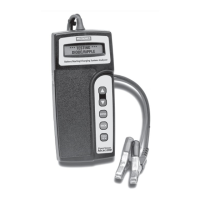• 7 •
STARTER SYSTEM PROBLEMS
With the vehicle lights on
If the engine does not crank and the lights dim heavily, check the con-
nections to ensure the wiring is clean and in good condition. If the wiring
is in good condition, repair or replace the starter.
If the engine does not crank and the lights go out, there is probably a
poor connection. Check the connection to the battery and ground and
ensure they are clean and tight.
If the starter does not crank and the lights do not turn on, check for an open
circuit and retest the battery to ensure it is good and fully charged. Replace
any defective wiring and clean and tighten all wiring connections.
With the vehicle lights off
If the engine cranks slowly but will not start, check all wiring to ensure it
is in good condition. Make sure the cables from the starter to the battery
are sized according to the manufacturer’s specifications. If the engine is
operating properly and the wiring is in good condition, repair or replace
the starter.
If the engine cranks but does not start, check the ignition system and fuel
system for other problems. If the engine does not crank and a clicking
noise is heard, check the solenoid.
CHARGING SYSTEM TEST
IMPORTANT: When testing older model diesel engines in cold weather,
preheating and post heating of the glow plug may skew test results.
Warm up the engine for 5 minutes then test the vehicle.
The Micro500 walks you through the steps to perform a charging system
analysis. With the vehicle running, you will be asked to perform tasks for
the Micro500 to do the analysis.
Step 1: The Micro500 will display live alternator output voltage.
Press ENTER to begin the charging system test.
Step 2: Testing at rev
The Micro500 will prompt you to rev the engine for 5 seconds. When the
Micro500 has detected the rev, data is collected and the analyzer will
show that it detected the rev. If the Micro500 does not detect that the rev
occurred, it will continue to prompt you to rev the engine for 5 seconds.
Once detected, press enter to continue.

